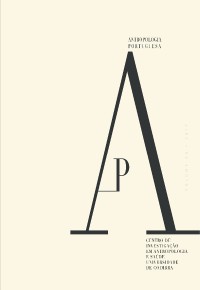Please use this identifier to cite or link to this item:
https://hdl.handle.net/10316.2/90696| Title: | Femoral Cortical Bone in a Portuguese Reference Skeletal Collection | Other Titles: | Massa Óssea Cortical do Fémur numa Coleção Esquelética de Referência Portuguesa | Authors: | Curate, Francisco Cunha, Eugénia |
Keywords: | Radiogrammetry;dual x-ray absorptiometry;periosteal apposition;endosteal resorption;Coimbra Identified Skeletal Collection;Radiogrametria;absorciometria radiológica de dupla energia;aposição periosteal;absorção endosteal;Colecção de Esqueletos Identificados | Issue Date: | 2017 | Publisher: | Imprensa da Universidade de Coimbra | Abstract: | This study aims to investigate patterns
of femoral cortical bone fragility with age
(at death) and to evaluate its associations with
sex and bone mineral density. Radiogrammetric
parameters of the femur and bone mineral
density at the proximal femur were assessed
in an adult sample (N=98) from the Coimbra
Identified Skeletal Collection (Portugal). Diaphysis
total width (DTW), femoral cortical index
(FEMCI) and bone mineral density (BMD)
are significantly higher in males, while medullary
width (MW) is not statistically different
between sexes. Cortical bone parameters of the femoral diaphysis are associated with age
only in women, whereas BMD decreases with
age in both sexes. The evaluation of femoral
cortical bone reveals sex-specific trajectories
of endosteal bone loss and periosteal apposition,
stemming from sexual differences in the
rate and pattern of bone loss, and in bone size.
In females, endocortical bone loss rises with
age, particularly in peri- and postmenopausal
years, decelerating later in life. Concomitantly,
accretion of bone in the subperiosteal surface
persists throughout adulthood — partially
offsetting bone fragility in women. Strength in
the femoral mid-diaphysis appears to be preserved
throughout most of the life course in
both sexes. Neste trabalho, pretende-se investigar a fragilidade óssea cortical no fémur com a idade (à morte) e a sua associação ao sexo e à densidade mineral óssea. Os parâmetros radiogramétricos do fémur e a densidade mineral óssea no fémur proximal foram avaliados numa amostra de indivíduos adultos (N=98) da Coleção de Esqueletos Identificados da Universidade de Coimbra (Portugal). A largura total da diáfise (LTD), o índice cortical do fémur (FEMCI) e a densidade mineral óssea (DMO) são significativamente maiores nos homens, enquanto a largura medular (LM) não é estatisticamente diferente entre os sexos. Os parâmetros corticais da diáfise do fémur encontram-se associados à idade apenas nas mulheres; por seu lado, a DMO declina com a idade em ambos os sexos. A avaliação do osso cortical do fémur revela trajetórias sexuais específicas de perda óssea endosteal e aposição periosteal, que têm origem em diferenças sexuais no grau e padrão de perda de osso, bem como no tamanho ósseo. Nas mulheres, a perda endocortical de osso aumenta com a idade, particularmente nos anos peri- e pós-menopáusicos, desacelerando mais tarde. De forma concomitante, a acreção de osso na superfície subperiosteal persiste durante a vida adulta – equilibrando parcialmente a fragilidade óssea nas mulheres. A resistência óssea a meio da diáfise do fémur parece ser preservada durante grande parte da vida em ambos os sexos. |
URI: | https://hdl.handle.net/10316.2/43420 | ISSN: | 0870-0990 2182-7982 (PDF) |
DOI: | 10.14195/2182-7982_34_5 | Rights: | open access |
| Appears in Collections: | Antropologia Portuguesa |
Files in This Item:
| File | Description | Size | Format | |
|---|---|---|---|---|
| femoral_cortical_bone_in_a_portuguese_referenceskeletal_collection.pdf | 831.64 kB | Adobe PDF |  |
Items in DSpace are protected by copyright, with all rights reserved, unless otherwise indicated.
